Introduction: A New Era in Astronomy
The James Webb Space Telescope (JWST), launched in 2021, revolutionized space science. Acting like glasses for astronomers, its powerful infrared imaging has unveiled stunning new details about exoplanets—planets outside our solar system.
In just a few years, JWST has helped discover dozens of new exoplanets, ranging from super-dense rocky worlds to giant gas planets. But how are these distant planets detected? And what can they teach us about the search for extraterrestrial life?

https://webbtelescope.org/contents/media/images/2022/052/01GF44EV0PPW2BHJS9HMA1AGEK
Meet the Cosmic Neighborhoods: Host Stars and Their Planets
Exoplanet habitability depends heavily on the type of host star. Here’s how star types influence the planets that orbit them:
Red Dwarfs (M-type): Most Common
- Small, cool stars with lifespans over 100 billion years
- Host tightly packed planetary systems
- Emit strong radiation, making habitability challenging
G-type Stars (like our Sun): Earth-Like Potential
- Have habitable zones ideal for rocky, Earth-sized planets
- Moderate lifespan, stable radiation
K-type Stars (Orange Dwarfs): The « Goldilocks » Candidates
- Longer-lived and more stable than the Sun
- Emit less harmful radiation, increasing potential for life
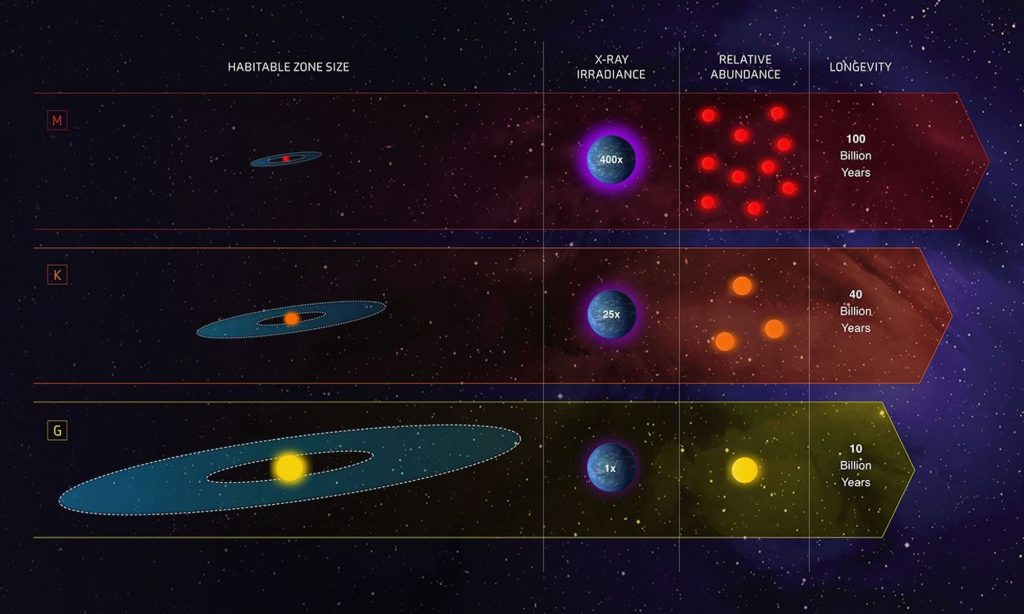
https://science.nasa.gov/asset/hubble/comparison-of-g-k-and-m-stars-for-habitability/
How We Detect Exoplanets: Methods Explained
1. Transit (58 percent) – The Dominant Techn1. Transit Method (58%)
- Measures brightness dips when a planet crosses in front of its star
- Best for detecting hot Jupiters and close-orbit planets
2. Radial Velocity (40%)
- Tracks wobbles in a star’s motion due to gravitational pulls
- Helps calculate planetary mass and orbital shape
3. Direct Imaging (2%)
- Rare technique that captures actual images of large, distant planets
- Used for objects like 51 Eridani b

The 2023 Discovery Boom: Powered by JWST
Thanks to JWST’s infrared sensors, 2023 saw a record number of exoplanet discoveries.
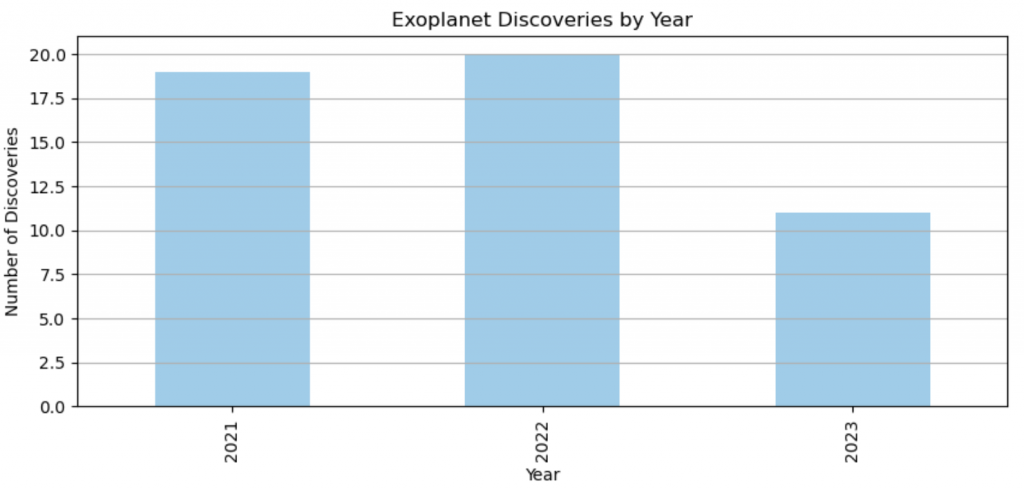
Key breakthroughs include:
- Atmospheric analysis (water, methane, CO₂)
- Detection of new planet types
- Acceleration in discovery rates
But we’re still biased: Most finds are « hot Jupiters » or small planets around Red Dwarfs. Earth-like worlds? Still elusive
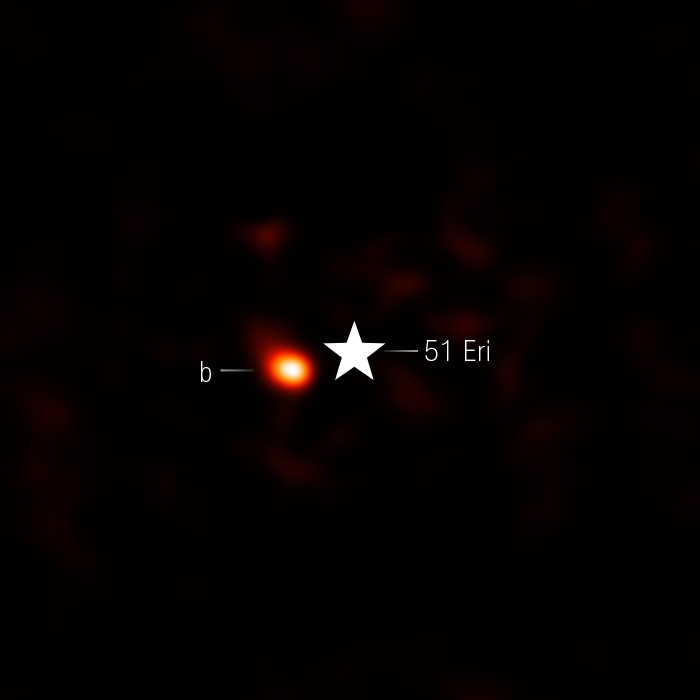
3D Exoplanet Map: Where These Worlds Live
A 3D analysis of exoplanets (2021-2023) reveals:
- Red Dwarfs dominate—most exoplanets orbit them.
- G-type stars have more widely spaced planets.
- Most discoveries are within 600 light-years—close enough for detailed study.
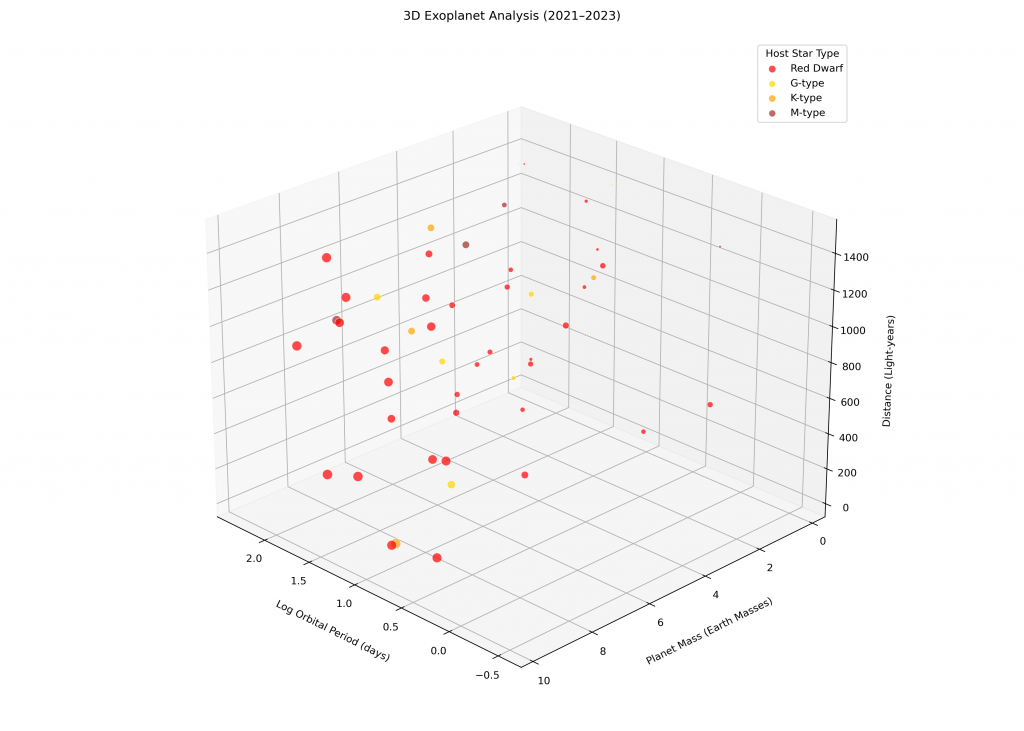
Explore the Cosmic Zoo in 3D
Want to see these alien systems for yourself? Our interactive 3D exoplanet visualizer lets you:
- Fly through real planetary systems scaled to their actual orbits
- Click any planet to see its size, orbit, and discovery method
( Mobile Tip: Rotate your phone for the best 3D experience! 🙂 , and this graph was built using Python!!)
Key Insights from the Correlation Heatmap
A statistical heatmap shows:
Strongest Correlations:
- Mass ↔ Radius (0.99) – Bigger planets are also more massive
- Mass ↔ Density (0.91) – Denser planets are typically more massive
Weak/No Correlations:
- Discovery Year ↔ Planet Type (~0) – Newer tech isn’t biasing results
- Orbital Period ↔ Distance (0.015) – No clear relation
Negative Correlation:
- Distance ↔ Density (-0.26) – Distant planets appear less dense (likely due to measurement limits)
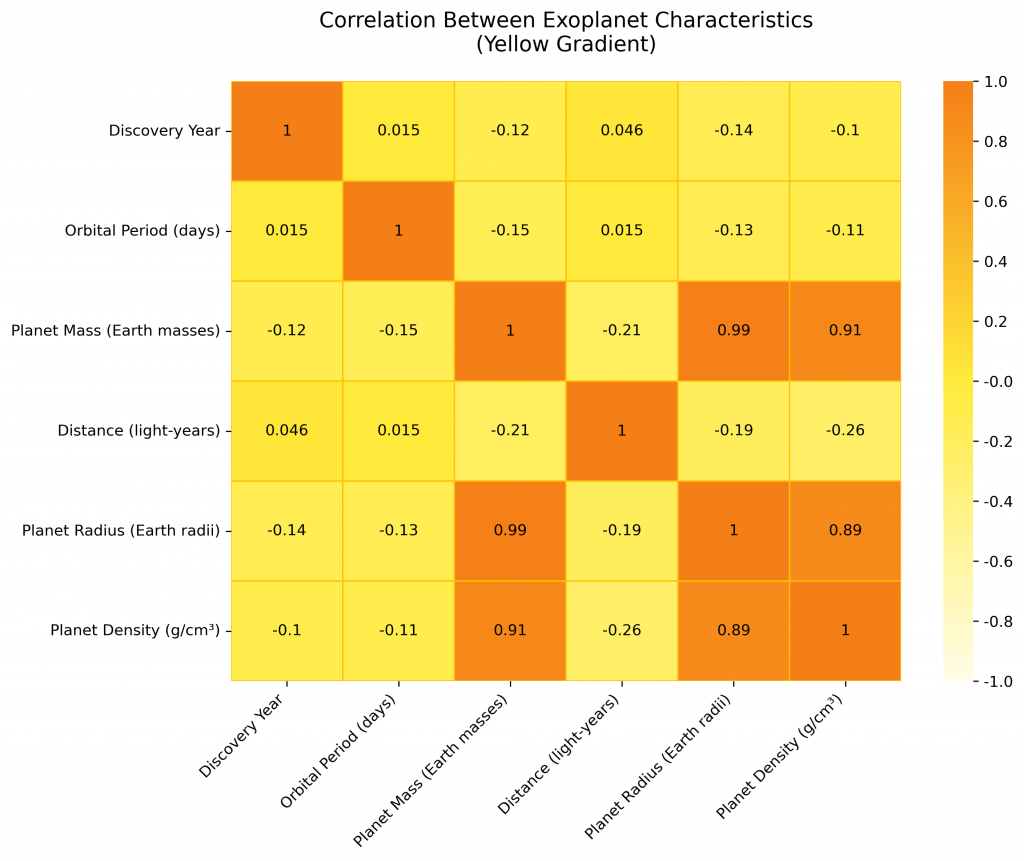
What’s Next? The Euclid Telescope and Rogue Planets
Launched in 2023, the Euclid Telescope maps the dark universe and explores:
- The role of dark matter in planet formation
- Detection of rogue planets—worlds that drift between stars
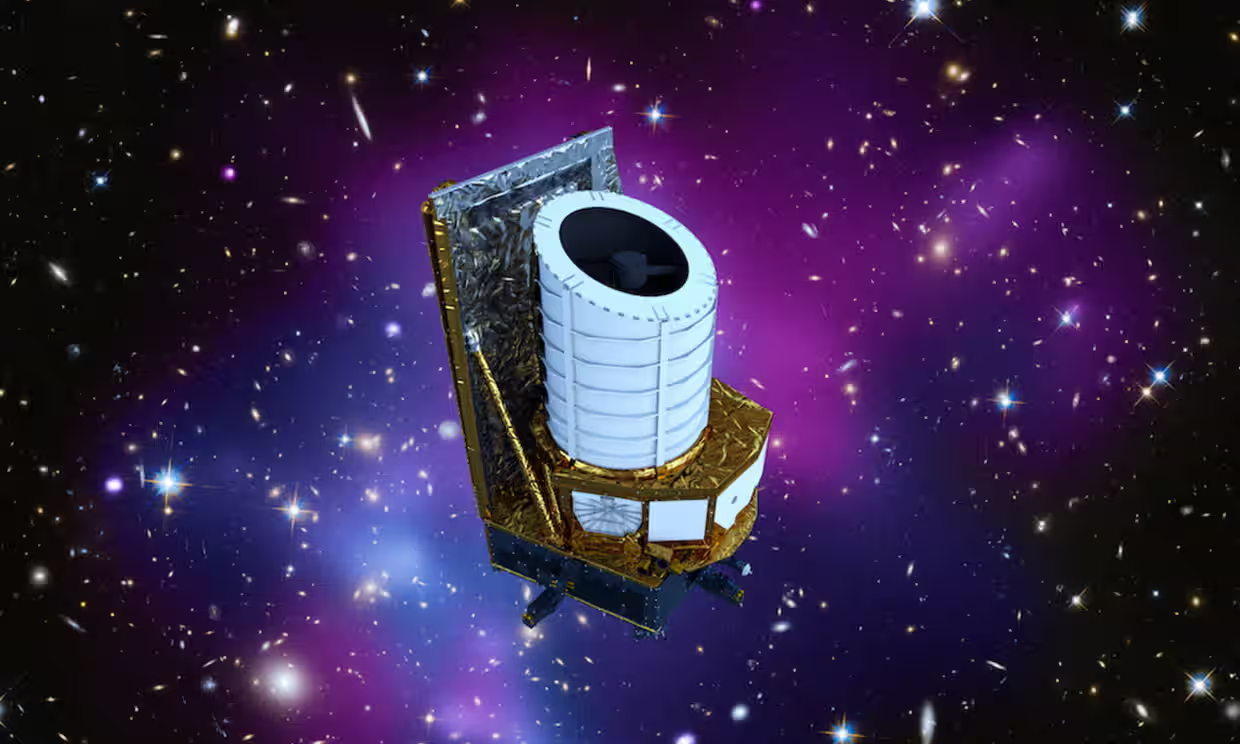
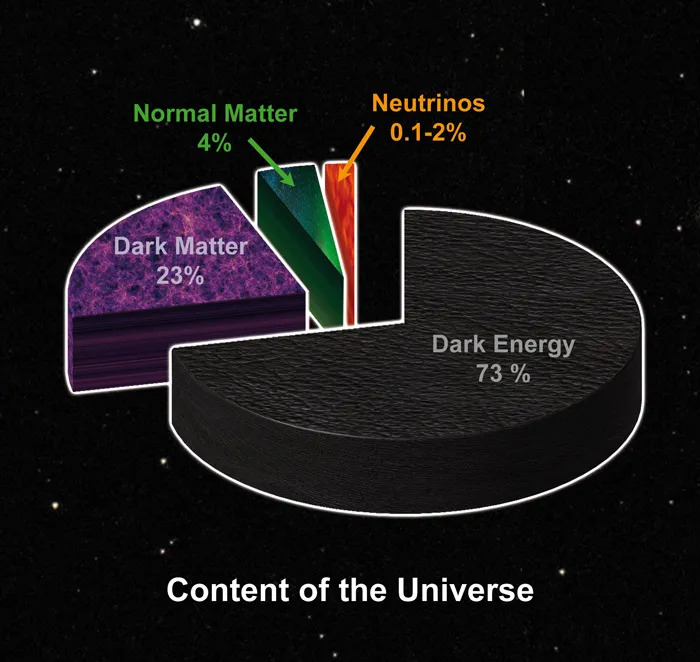
https://medium.com/physics-and-machine-learning/dark-energy-1f122819a8ed
Conclusion: The Golden Age of Planet-Hunting
We are living through a cosmic renaissance. Each new discovery adds to our understanding of:
- How planetary systems form
- Where life could exist
- What makes Earth unique
One day, we might discover a true Earth 2.0—until then, the search itself is shaping the future of astronomy.
References & Data Sources
- NASA Exoplanet Archive
- JWST (James Webb Space Telescope) Observations (2021–2023)
- European Space Agency (ESA)
- Euclid Mission
- Image Credits: NASA, ESA, JWST, STScI, Euclid
- Heatmap & Visualization Code: Python, NASA Exoplanet Data 2021–2023
- webbtelescope.org
